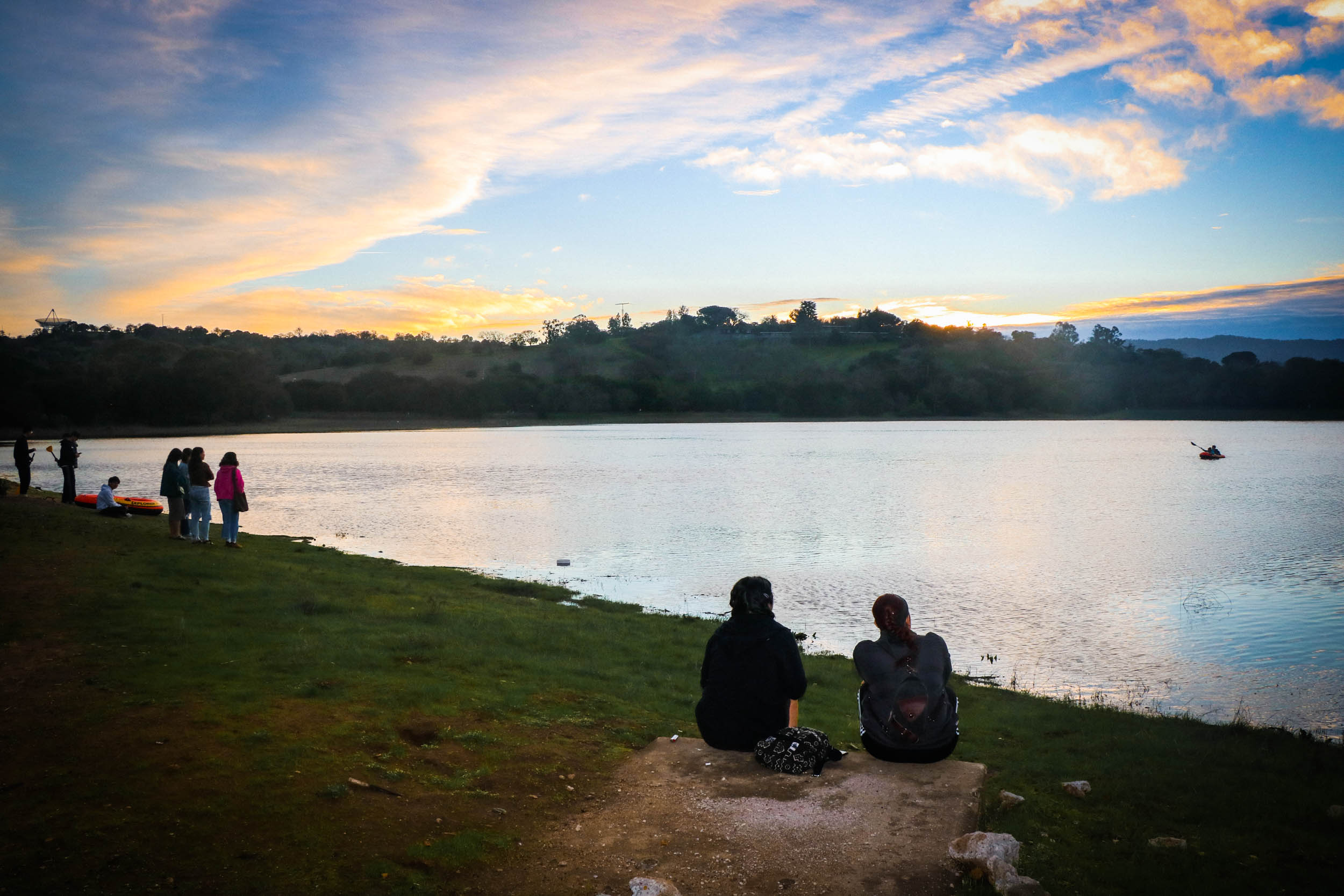The Stanford Conservation Program is installing interpretive signage around Lake Lagunita with the aim of educating students and the community about local ecology and biodiversity. The signs will address common questions about the lake, with one sign that specifically aims to dispel misinformation regarding why Lagunita is only sometimes filled. The signs will be unveiled June 1, fostering recognition and responsibility for the biodiversity on Stanford’s campus.
Although commonly called “Lake Lagunita”, Lagunita is actually classified as a man-made vernal pool since it only contains water a portion of the year. It has existed since before the University’s founding. In the 1870s, it was a 115 million gallon reservoir built by Leland Stanford to supply water for crops on the Palo Alto Stock Farm.
Lagunita’s past brims with a spirited history. During its peak popularity, Lagunita hosted a range of recreational activities such as canoeing, Big Game bonfires, horseback riding, windsurfing and more. However, in 2001, the University decided to stop filling Lagunita, leaving it dry during the warmer months. Now its primary role in students’ lives is to function as a place of relaxation, offering a scenic setting for students to clear their heads.
Stanford’s Conservation Program was formalized in the 1990s with the mandate to “seek a sustainable balance between human use and activity and biological conservation.” Although Stanford sits against the backdrop of suburban Silicon Valley, it hosts an array of perhaps lesser-known inhabitants, with “150 species of birds, over 45 species of mammals, 19 species of reptiles, 11 species of amphibians, 8 species of fish countless species of invertebrates” and many others, according to the program’s website.
The program — consisting of Stanford staff and student interns — oversees and restores ecosystems, conducts fieldwork, participates in land use management, addresses highly invasive species and facilitates responsible use of the Stanford property. One of its main tasks is the protection of species listed as endangered or threatened by the federal and state governments, which Stanford is required by law to perform on its lands.
The concept for the signage project originated from the 2022 winter quarter’s herpetology class led by Esther Cole Adelsheim, the program’s manager and Lauren O’Connell, assistant professor of biology. They asked students to brainstorm strategies to enhance the conservation efforts for amphibians and reptiles across Stanford’s campus, and many students suggested informative signage aimed at enlightening both students and the broader community. The project has evolved into a collaborative effort between student interns, Stanford staff and contracted digital illustrators.
Maddy Bernstein B.S. ’20 M.S. ’23, who began working on the project as a student and is now a conservation technician at the program, said that the project “interface[s] with a lot of different people who work in a lot of different areas at Stanford.” Participants are drawn from many majors: environmental studies, symbolic systems, mechanical engineering, environmental communication and art departments.
The team has designed and built four large signs and twelve smaller signs with three panels each. The signs touch on topics of ecology, hydrology and how people have interacted with the natural space over time.
The large signs prompt readers with questions, asking them “How do humans interact with Lagunita?” “Why is there (or isn’t there) water in Lagunita?” “Who lives at Lagunita? and finally, “Why do we care about California tiger salamanders?” The small signs detail the life cycle of Lagunita, such as tracking how it evolves through the seasons and what the community can do to protect its species.
There’s also a sign dedicated to the California tiger salamander’s life cycle, highlighting the salamanders’ vital role in driving food web interactions within Lagunita’s ecosystem. The California tiger salamander is both an endangered and threatened species. Myths abound that the salamander is the reason why Lagunita is not filled to former recreational levels is because of this amphibian. Rather, it is to protect the steelhead trout population.
On top of the tiger salamander rumors, students also have rebelled against the university’s lowering of the water levels because it limits recreation on Lagunita. The program’s communications and outreach specialist, John Lowndes ’25, said that he believes the “Stanford’s War On Fun” and “Keep Lake Lag Full” sentiments have resonated with many students who want to use Lagunita recreationally. But he says students may not understand the dangers and their impacts on Lagunita.
According to Lowndes, Lagunita’s water can contain urban runoff, including fertilizer and pesticides. Additionally, various waste and dead rodents can be found in Lagunita.
Adelsheim echoed Lowndes, writing that “trash is probably the biggest problem, and sadly there are some pretty gross versions of this – hypodermic needles, condoms, etc.” Such contamination can pose health risks like cercarial dermatitis or “swimmer’s itch”, which is a rash caused by parasitic flatworms.
Moreover, human activity can cause catastrophic damage to the wildlife near Lagunita. Footraffic and recreational use of Lagunita can kill developing embryos and larvae in the shoreline areas.
Despite the risks associated with recreational use, Lagunita remains a hub of biodiversity, as highlighted by the project’s signage. The unveiling party for the interpretive signage is scheduled for June 1 at the Lake Lagunita barbecue pit. The event will feature an afternoon of stewardship activities and games, including a scavenger hunt, live music and art.
Bernstein said that she believes the project will produce a shift towards mindful sustainability. She wrote that “it feels incredibly special to get to give back to this place that has given so much to me.”
